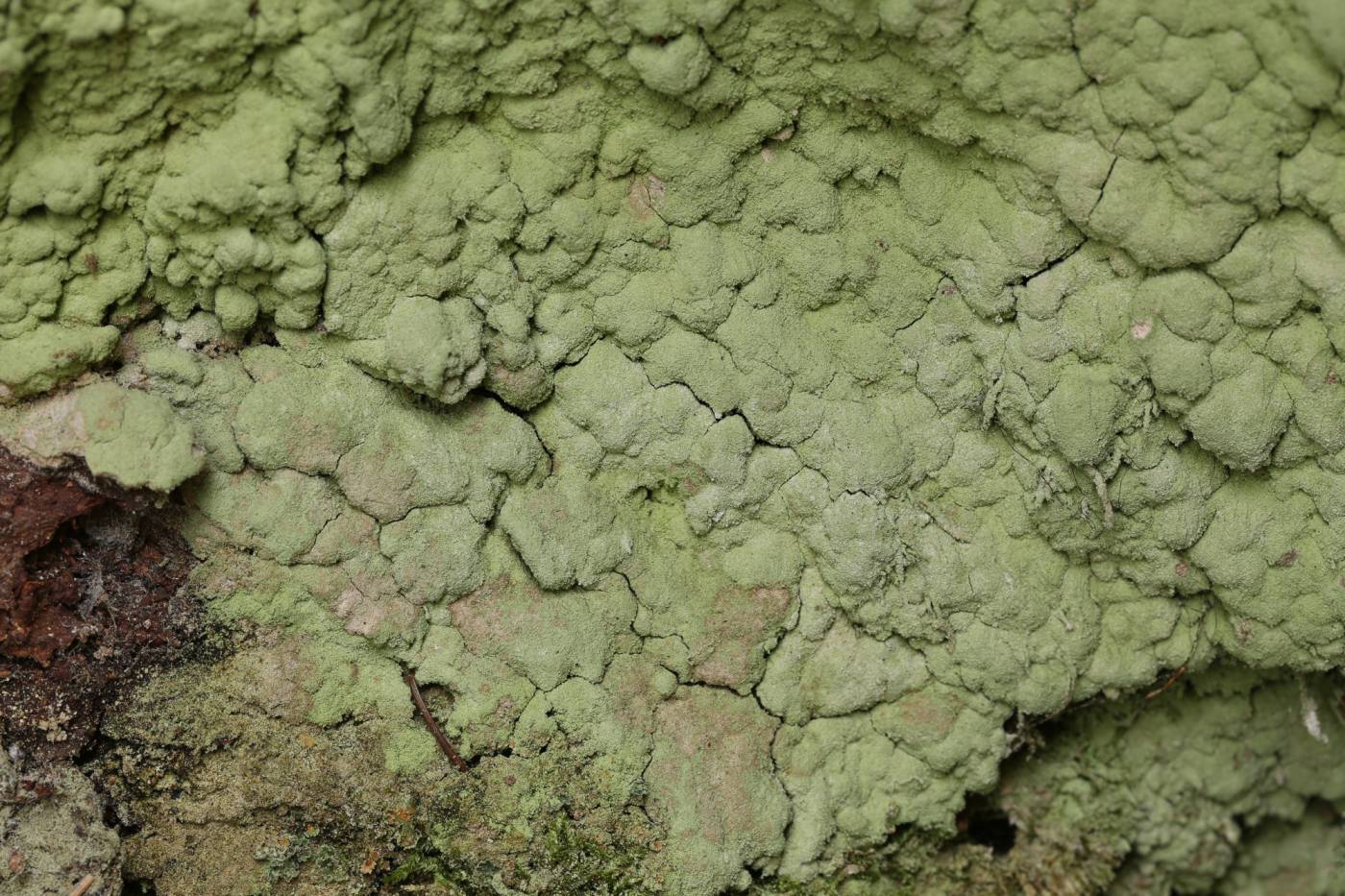A species usually forming large, green, finely-sorediate, rather thick crusts in shaded, rain-protected, permanently humid microhabitats, for example, in ravines, deep valleys and mountain old-growth forests. Its usual substrates are vertical to overhanging shaded acidic rocks (and bryophytes overgrowing them) and bases of old trees with acidic bark (often deep fissures and exposed roots). Less often the species may grow on standing decaying wood. In Europe, it is more common in humid oceanic regions. In continental Europe, it prefers microclimatically stable, humid sites. The species is rather rare in the Czech Republic, occurring locally in afforested areas. A relatively rich populations may be found in sandstone areas and in some higher mountains.
Literature: Slavíková-Bayerová Š. (2006): New and interesting records of Lepraria (Stereocaulaceae, Ascomycota) from the Czech Republic. – In: Lackovičová A., Guttová A., Lisická E. & Lizoň P. [eds], Central European lichens – diversity and threat, p. 97–107, Mycotaxon Ltd., Ithaca.
taxonomic classification:Ascomycota → Lecanoromycetes → Lecanorales → Stereocaulaceae → Lepraria
Red List (Liška & Palice 2010):NT – near threatened
Red List (Malíček 2023):C3 – endangered
Occurrence in the Czech Republic
All records: 32, confirmed 32. One click on a selected square displays particular record(s), including their source(s).
